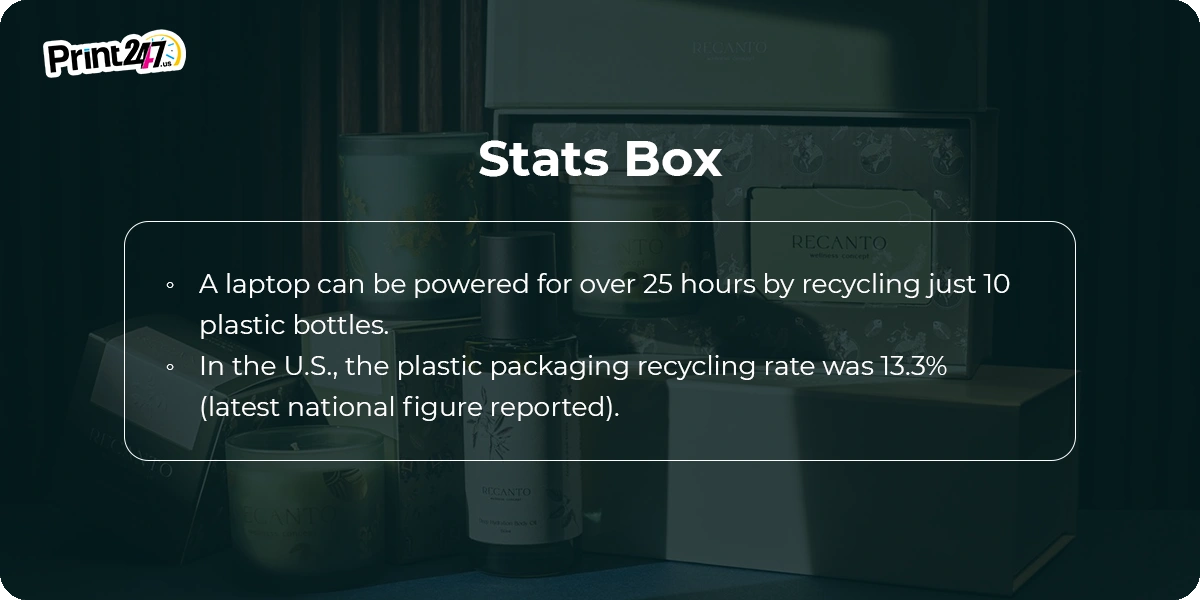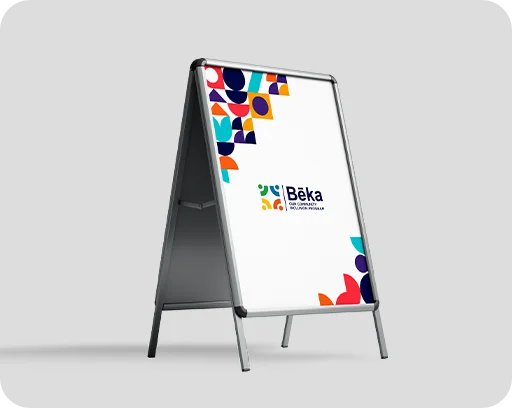Luxury Meets Sustainability: How Premium Cosmetic Boxes Go Green Without Losing Appeal
.jpg)
Premium cosmetic boxes can become more sustainable by implementing environment-friendly practices, eco-friendly raw materials, and incorporating minimalistic designs. With this wise approach, cosmetic and beauty brands can reduce their impact on the environment while maintaining luxurious aesthetics.
Luxury and sustainability can live in the same box. Today's beauty shoppers want both a high-quality unboxing experience and environmentally friendly packaging. If you sell skincare, makeup, fragrance, or hair care, the box is the first touchpoint. It sets the tone for quality, safety, and values.
This article shows how to design premium cosmetic boxes that look high-end, feel high-end, and meet growing rules on sustainable cosmetic packaging. We’ll explain it in clear steps, real-world examples, and simple checks to avoid greenwashing. You’ll also see where to source eco-friendly cosmetic boxes in 2025.
Who this helps: brand owners, packaging buyers, operations leads, and marketers who must balance style, cost, speed, and compliance.

Source: ( EPA, U.S. Plastics )
Why Sustainable Packaging Matters in the Cosmetic Industry?
Luxury is not only about looks. It is also about responsibility. Beauty generates heavy packaging use: jars, pumps, droppers, cartons, films, trays, and mailers. Waste adds up fast. Consumers now link care for skin with care for the planet.
A 2025 survey of U.S. shoppers found 54% chose products with sustainable packaging in the last six months. 90% said they are more likely to buy from a brand with eco-friendly packaging.
That affects sales, repeat purchases, and brand trust. Regulation is also moving. In the EU, the new regulation pushes waste prevention, reuse, and real recyclability by design. Expect tighter rules on things like empty-space ratios, reuse in certain channels, and recycled content. Cosmetics sellers must plan now to avoid packaging redesigns under pressure.
Finally, material science and the circular economy of beauty are advancing. Guidance from recyclability groups sets clear design rules: simplify materials, avoid problem inks/adhesives, and build mono-material structures where possible. These steps cut costs over time (less waste, fewer SKUs) and help meet retailer programs.
How Premium Cosmetic Boxes Go Green Without Losing Appeal? Practical Tips
Going green doesn't have to mean weakening your brand. Think of it as an update to classic luxury that includes clean lines, smarter materials, and honest claims. Use these steps to keep the “wow” while meeting new standards.
#1 - Choosing Eco-Friendly Materials for Premium Cosmetic Boxes
Proceed with paperboard from FSC-certified sources or high-recycled materials. The FSC chain-of-custody signals responsible forestry and is recognized by retailers and consumers. Pair it with vegetable oil or water-based inks and aqueous coatings. It reduces VOCs and odors. These changes keep print quality high and support environmentally friendly cosmetic packaging.
For plastic components (windows, trays, caps), pick mono-material resins with strong recycling streams.
If you need a barrier, ask suppliers about bio-based plastics for cosmetics (e.g., PLA/PHA blends or paper-based barrier tubes). Confirm end-of-life routes. Paper-based tubes have already shown material reduction in beauty.
Be real about biodegradable beauty boxes' claims. In most regions, you can only call a plastic “compostable” if it meets ASTM D6400/D6868 and local labeling rules (often BPI certification). Many facilities do not accept compostable plastics, so check the local system before you print claims on the box.
.webp)
#2 - Incorporating Minimalist Designs to Reduce Waste
Premium does not mean excess. Use minimalist eco-packaging principles. It means right-size the cosmetic box, reduce empty space, and remove plastic windows unless needed for retail security. Replace molded foam with die-cut board inserts. Choose single-color or duotone print with clear spot varnish to keep a luxury look and reduce ink laydown. Keep adhesives to a minimum and ensure labels and foils won’t block recycling.
In flexibles or sleeves of cosmetic packaging, move from multi-material laminates to recyclable polyolefin mono-structures when possible. In rigid, avoid heavy metallization on clear PET; use soft-touch aqueous coatings or embossing for a premium feel. Design for flat-pack shipping to cut freight emissions and damage.
.webp)
#3 - Adopting Refillable and Reusable Packaging Systems
Refills keep the premium primary pack (jar, case, or bottle) in use and replace only the product contact part. Beauty leaders report strong progress with refillable beauty product boxes and pouches.
A 150 ml pouch can refill three 50 ml jars while using 61% less plastic; shampoo pouches can reduce plastic by ~81%. Sephora’s Pact Collective Recycling Program also helps shoppers bring back “hard-to-recycle” empties across brands. These moves show reuse can be both practical and brand-building.
How to make refills work in luxury cosmetic packaging:
Use durable, beautiful outers (metal, glass, thick-wall PET) designed to last.
Make the refill swap quick.
Add clear refill icons and QR help.
Offer bundle pricing so the refill is cheaper than rebuying.
Train store staff and partners; add a returns program for tricky parts (pumps, droppers).
Market indicators suggest that retailers are rewarding brands that make investments in reuse and take-back, and reports indicate that the number of refillable SKUs is rising.
#4 - Educating Consumers on Green Packaging Benefits
Even the best eco-luxury cosmetic solutions fail if people do not know what to do. Make on-pack instructions easy: “Carton: Recycle,” “Jar: Reuse/Refill,” plus a QR code with quick sorting tips. Education drives action; recent consumer research shows strong purchase intent when sustainability information is clear, specific, and easy to follow.
Use website pages and unboxing inserts to explain recyclable luxury cosmetics and what each logo means. Show a short video of how to refill. Contact with retailers who provide drop-off bins for hard-to-recycle components. These simple reminders move behavior in the right direction. They also help your brand stand out on values and ease.
#5 - Ensuring Regulatory Compliance in Eco-Packaging
Marketers must follow the FTC Green Guides when making environmental claims in the United States.
Avoid broad, unqualified phrases. For example, “eco-friendly” without proof.
Be specific: “Carton contains 80% recycled fiber” or “Jar uses 30% PCR PET.”
If you claim “recyclable,” guarantee access to recycling is available to a substantial majority of consumers, or qualify the claim. Updates to the Green Guides are still under review, so watch for changes.

#6 - Customizing Boxes for Brand Identity and Sustainability
Luxury is in the details like structure, touch, and print. US-renowned cosmetic packaging suppliers like Print247 offer a high-end feel with sustainable beauty packaging by using:
Tactile board with emboss/deboss (adds richness without extra layers)
Aqueous soft-touch or matte coatings instead of laminates
Minimal foil (or foil-like cold transfer) used sparingly
Spot UV alternatives like high-gloss water-based varnish
Smart dielines that create reveal moments without plastic windows
The win comes from basics done well: better materials, fewer layers, proven refill systems, clear education, and honest claims. When you do this, your premium cosmetic boxes still look stunning. They will also meet the future head-on.
Where to Buy Sustainable Cosmetic Packaging in 2025?
If you want eco-friendly cosmetic boxes without losing speed, quality, or style, Print247 is a practical choice for the U.S. market.
Why brands pick Print247 for sustainable beauty packaging:
Free design support: Packaging engineers and prepress help you right-size cartons, choose sustainable cosmetic materials where suitable, and keep finishes compatible with recycling.
Fast shipping & short lead times: U.S. production and quick turns for launches, PR kits, and seasonal drops.
Custom options that still recycle: soft-touch aqueous, emboss/deboss, limited foil, and clear guidance on eco-friendly choices.
A luxury cosmetic packaging system that looks premium in hand, protects your product, and stands up to retailer checks and new rules, delivered on time.
Final Thoughts
The relation between luxury and sustainability is not complex. Most sustainable cosmetic packaging wins come from simple moves. They include better fiber, fewer layers, smarter finishes, and honest words. Refill where it makes sense. Right-size everything. Use respected standards and guides. Tell shoppers exactly how to reuse or recycle. When you do this, your sustainable luxury skincare boxes still feel special, and the story holds up under review. Keep listening to your customers, keep testing, and keep your packaging claims clear and true.
FAQs
What makes a cosmetic box “sustainable”?
You can achieve sustainability for cosmetic boxes by using responsibly sourced board and simple mono-material structures. Also, consider water-based inks and designs that enable recycling or reuse. Honest labels and local end-of-life options matter as much as materials.
Is compostable packaging a good idea for beauty?
It depends. Many regions do not accept compostable plastics. If you use them, they must meet ASTM D6400/D6868 and often BPI labeling rules. Check local programs before making claims on the pack.
Are refills really better for the environment?
Yes, when the durable outer is reused many times and the refill uses less material. For example, some brands report 61 to 81% less plastic for select refills versus buying new. Clear user guidance helps adoption.
What inks and finishes are safer choices?
Water-based inks and aqueous varnish to cut VOCs are safer choices. For any claims about safety, rely on supplier documentation and recognized guidelines.
How do I keep a luxury look with fewer materials?
Use tactile boards, emboss/deboss, soft-touch aqueous coatings, and clean layouts. Limit foil and complex laminates. Luxury comes from detail and feel, not extra layers.


















































.jpg)
.jpg)
.jpg)